
Concept explainers
a.
The equation of a ration function that gives the surface area of the lunch box in terms of x .
a.
Answer to Problem 1MP
Explanation of Solution
Given:
The volume of the lunch box is,
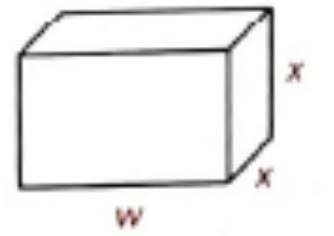
Concept Used:
- Least Common Denominator (LCD) is the smallest number that is divisible by the denominator of all the fractions that are being added or subtracted.
- Solving an equation containing rational expressions
- Multiply both sides of equations by LCD(least common denominator) of all denominators.
- Remove any grouping symbols and solve the resulting equation for the variable asked in equation
Calculation:
The expression for the surface area of the lunch box is given by,
So, in the expression of surface area, the first term has no denominator, so it can be considered 1 as its denominator. The denominator of second term is x , so the least common denominator of 1 and x should be x . So, multiply the first term by x up and down and then simplify the numerators over the common denominator as shown below,
Thus, the equation of a rational expression for the surface area of lunch box is
b.
The graph of the function for
b.
Explanation of Solution
Given:
The volume of the lunch box is,
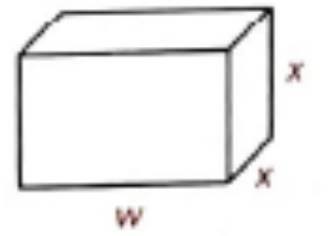
Concept Used:
- Least Common Denominator (LCD) is the smallest number that is divisible by the denominator of all the fractions that are being added or subtracted.
- Solving an equation containing rational expressions
- Multiply both sides of equations by LCD(least common denominator) of all denominators.
- Remove any grouping symbols and solve the resulting equation for the variable asked in equation
Calculation:
The graph of the surface area function is shown below,
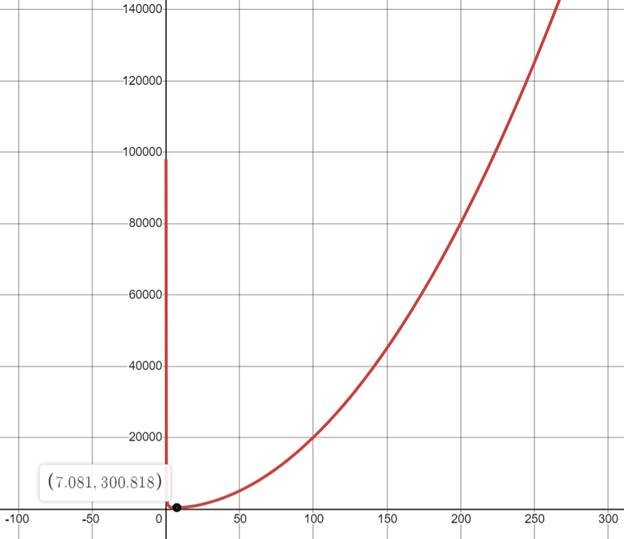
The graph represents the amount of cardboard needed S(x) on vertical axis, for the side length x of the box in horizontal axis.
c.
The coordinate of the minimum point of the function.
c.
Answer to Problem 1MP
Explanation of Solution
Given:
The volume of the lunch box is,
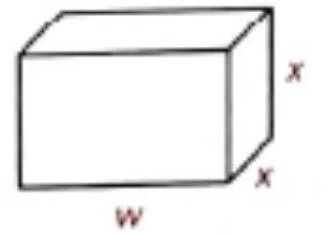
Concept Used:
- Least Common Denominator (LCD) is the smallest number that is divisible by the denominator of all the fractions that are being added or subtracted.
- Solving an equation containing rational expressions
- Multiply both sides of equations by LCD(least common denominator) of all denominators.
- Remove any grouping symbols and solve the resulting equation for the variable asked in equation
Calculation:
The graph of the surface area function is shown below,
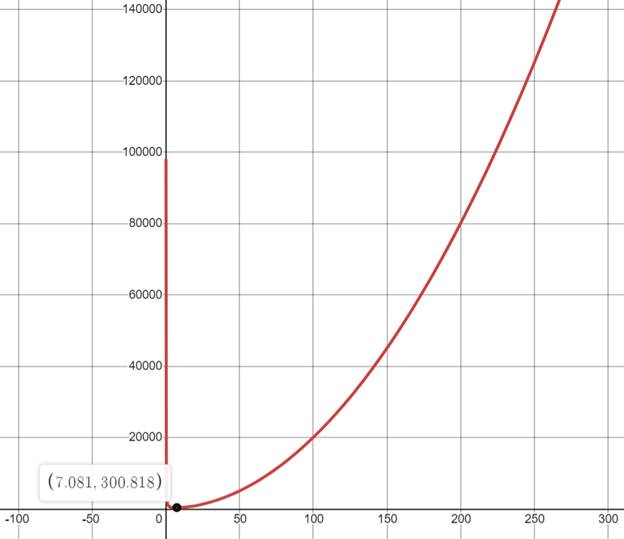
The graph represents the amount of cardboard needed S(x) on vertical axis, for the side length x of the box in horizontal axis.
From the graph it is clear the coordinates of the minimum point rounded to nearest hundredth is
d.
What does the minimum point tell.
d.
Explanation of Solution
Given:
The volume of the lunch box is,
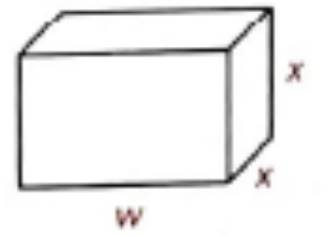
Calculation:
The minimum point of the graph tells that when the length of the base of the box is
Chapter 11 Solutions
High School Math 2015 Common Core Algebra 1 Student Edition Grade 8/9
Additional Math Textbook Solutions
College Algebra (7th Edition)
Elementary Statistics (13th Edition)
Thinking Mathematically (6th Edition)
Intro Stats, Books a la Carte Edition (5th Edition)
A Problem Solving Approach To Mathematics For Elementary School Teachers (13th Edition)
Pre-Algebra Student Edition
- Find the Laplace Transform of the function to express it in frequency domain form.arrow_forwardPlease draw a graph that represents the system of equations f(x) = x2 + 2x + 2 and g(x) = –x2 + 2x + 4?arrow_forwardGiven the following system of equations and its graph below, what can be determined about the slopes and y-intercepts of the system of equations? 7 y 6 5 4 3 2 -6-5-4-3-2-1 1+ -2 1 2 3 4 5 6 x + 2y = 8 2x + 4y = 12 The slopes are different, and the y-intercepts are different. The slopes are different, and the y-intercepts are the same. The slopes are the same, and the y-intercepts are different. O The slopes are the same, and the y-intercepts are the same.arrow_forward
- Choose the function to match the graph. -2- 0 -7 -8 -9 --10- |--11- -12- f(x) = log x + 5 f(x) = log x - 5 f(x) = log (x+5) f(x) = log (x-5) 9 10 11 12 13 14arrow_forwardWhich of the following represents the graph of f(x)=3x-2? 7 6 5 4 ++ + + -7-6-5-4-3-2-1 1 2 3 4 5 6 7 -2 3 -5 6 -7 96 7 5 4 O++ -7-6-5-4-3-2-1 -2 -3 -4 -5 -7 765 432 -7-6-5-4-3-2-1 -2 ++ -3 -4 -5 -6 2 3 4 5 6 7 7 6 2 345 67 -7-6-5-4-3-2-1 2 3 4 5 67 4 -5arrow_forward13) Let U = {j, k, l, m, n, o, p} be the universal set. Let V = {m, o,p), W = {l,o, k}, and X = {j,k). List the elements of the following sets and the cardinal number of each set. a) W° and n(W) b) (VUW) and n((V U W)') c) VUWUX and n(V U W UX) d) vnWnX and n(V WnX)arrow_forward
- 9) Use the Venn Diagram given below to determine the number elements in each of the following sets. a) n(A). b) n(A° UBC). U B oh a k gy ท W z r e t ་ Carrow_forward10) Find n(K) given that n(T) = 7,n(KT) = 5,n(KUT) = 13.arrow_forward7) Use the Venn Diagram below to determine the sets A, B, and U. A = B = U = Blue Orange white Yellow Black Pink Purple green Grey brown Uarrow_forward
 Algebra and Trigonometry (6th Edition)AlgebraISBN:9780134463216Author:Robert F. BlitzerPublisher:PEARSON
Algebra and Trigonometry (6th Edition)AlgebraISBN:9780134463216Author:Robert F. BlitzerPublisher:PEARSON Contemporary Abstract AlgebraAlgebraISBN:9781305657960Author:Joseph GallianPublisher:Cengage Learning
Contemporary Abstract AlgebraAlgebraISBN:9781305657960Author:Joseph GallianPublisher:Cengage Learning Linear Algebra: A Modern IntroductionAlgebraISBN:9781285463247Author:David PoolePublisher:Cengage Learning
Linear Algebra: A Modern IntroductionAlgebraISBN:9781285463247Author:David PoolePublisher:Cengage Learning Algebra And Trigonometry (11th Edition)AlgebraISBN:9780135163078Author:Michael SullivanPublisher:PEARSON
Algebra And Trigonometry (11th Edition)AlgebraISBN:9780135163078Author:Michael SullivanPublisher:PEARSON Introduction to Linear Algebra, Fifth EditionAlgebraISBN:9780980232776Author:Gilbert StrangPublisher:Wellesley-Cambridge Press
Introduction to Linear Algebra, Fifth EditionAlgebraISBN:9780980232776Author:Gilbert StrangPublisher:Wellesley-Cambridge Press College Algebra (Collegiate Math)AlgebraISBN:9780077836344Author:Julie Miller, Donna GerkenPublisher:McGraw-Hill Education
College Algebra (Collegiate Math)AlgebraISBN:9780077836344Author:Julie Miller, Donna GerkenPublisher:McGraw-Hill Education





